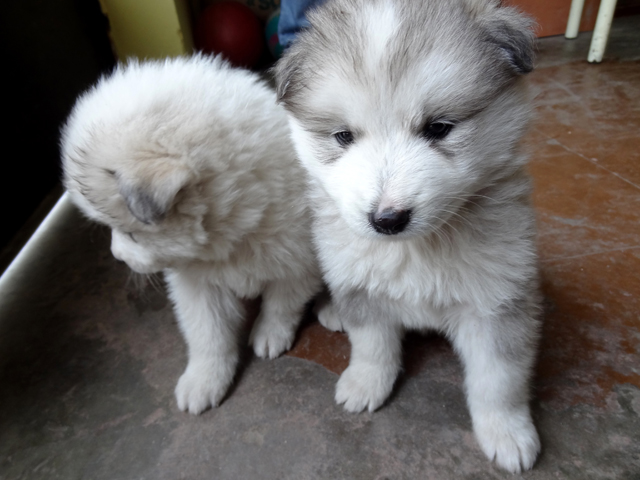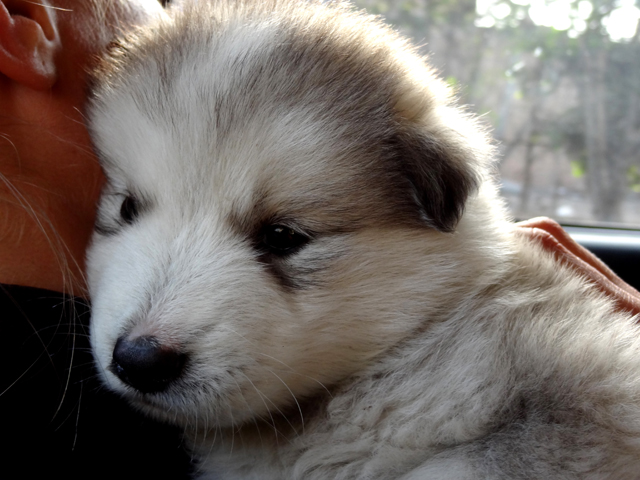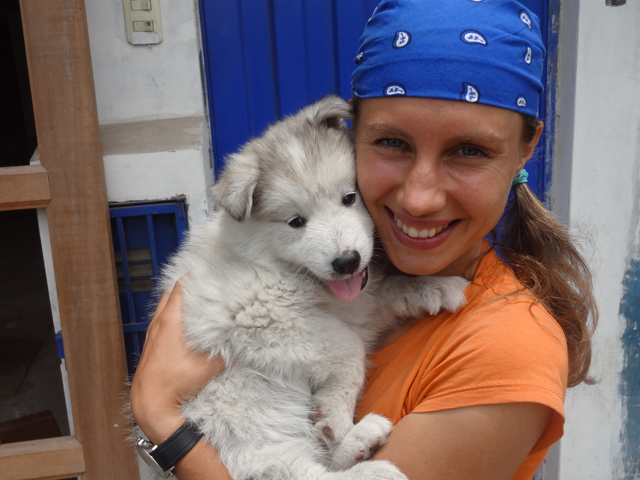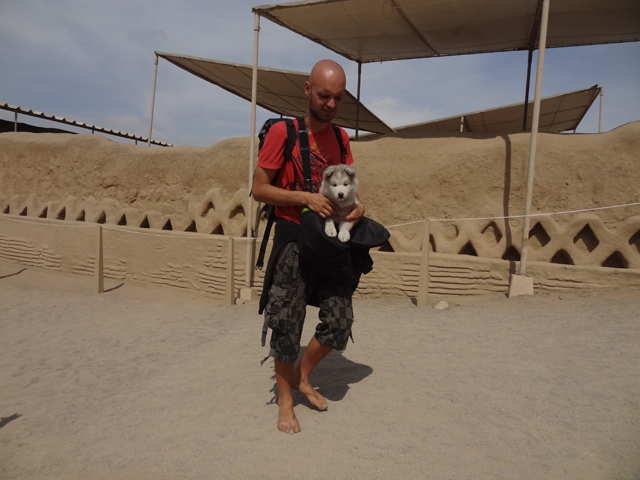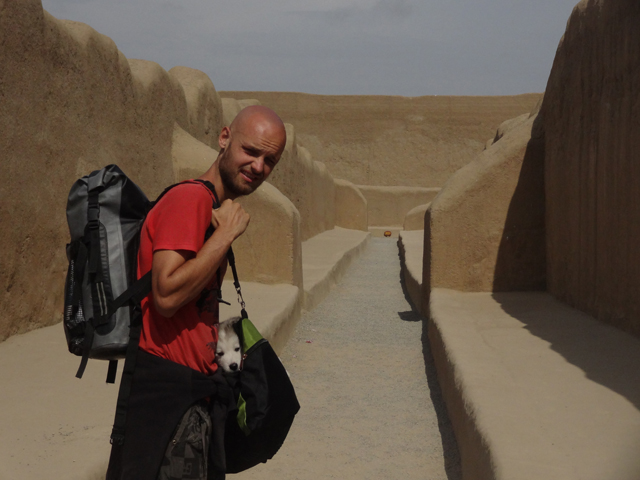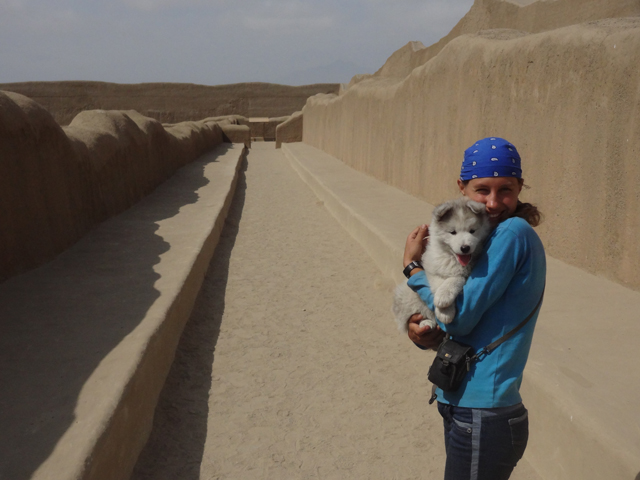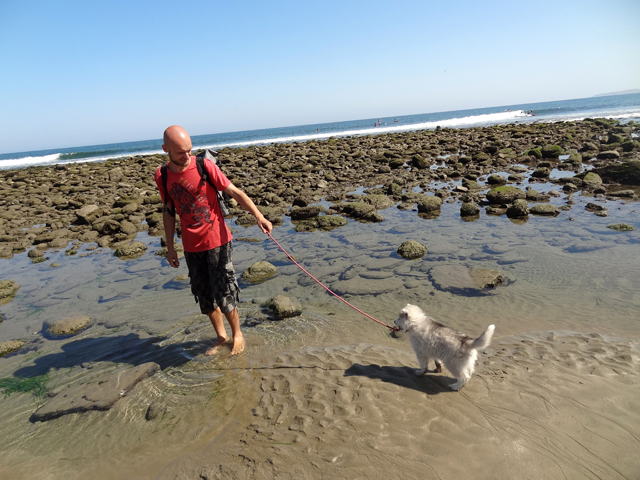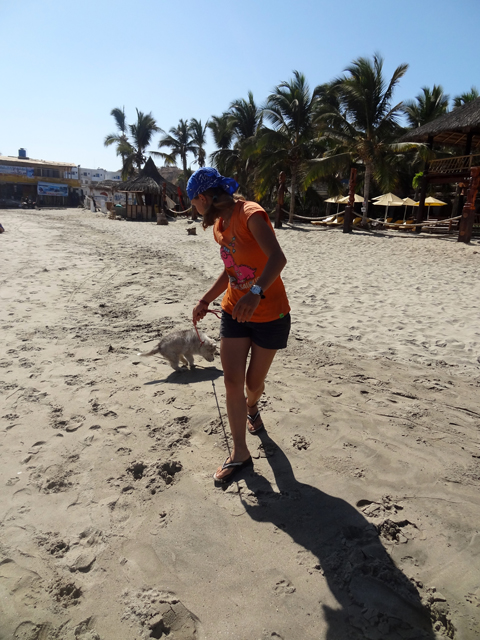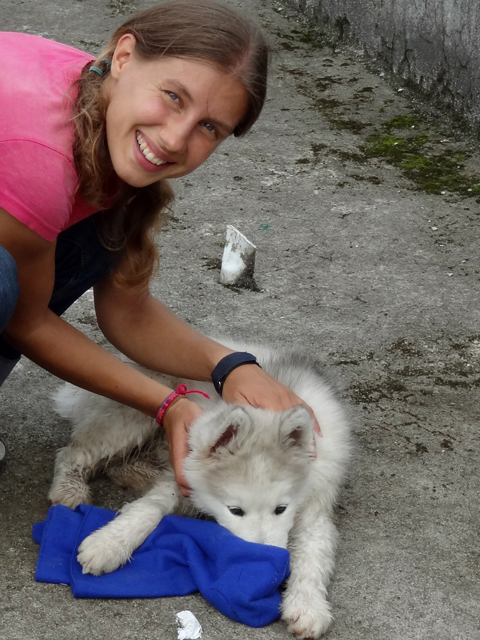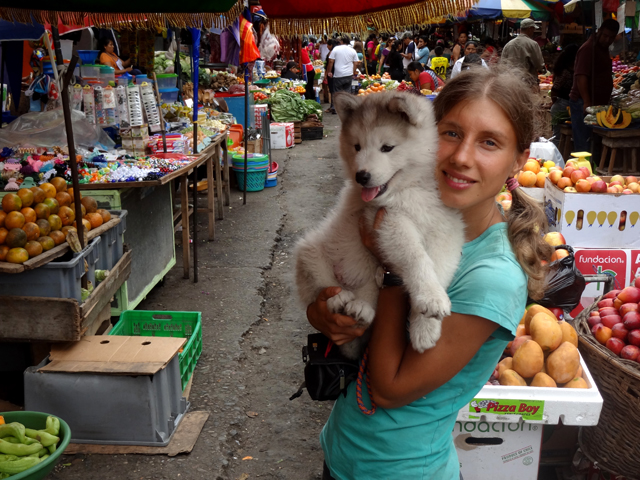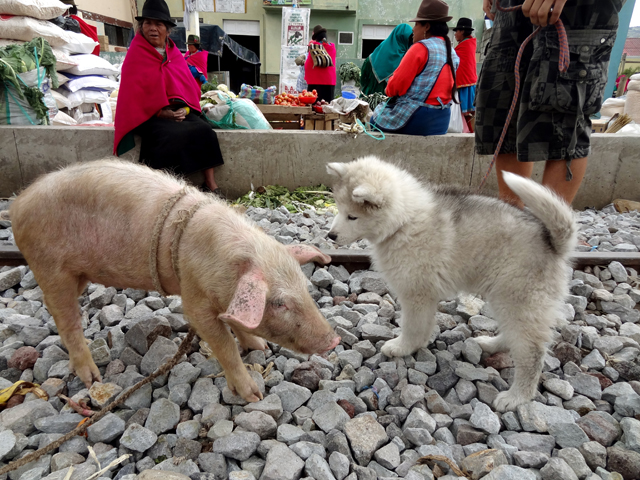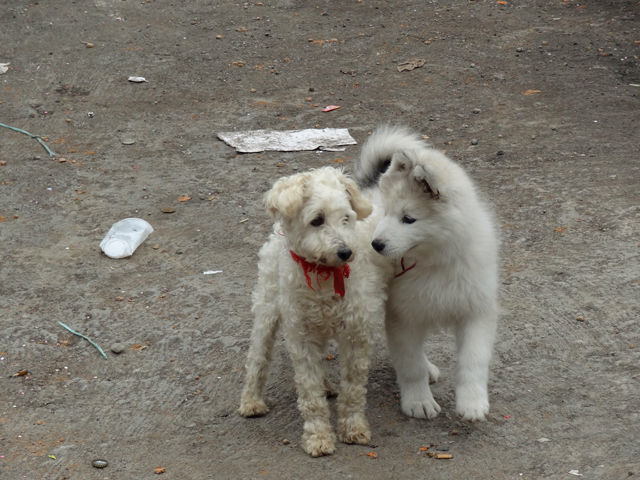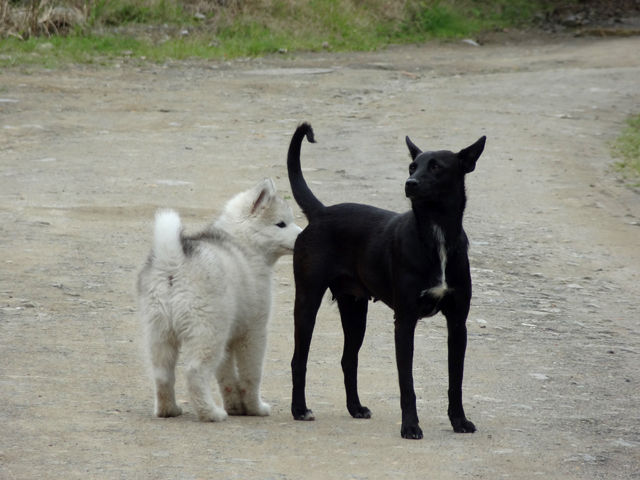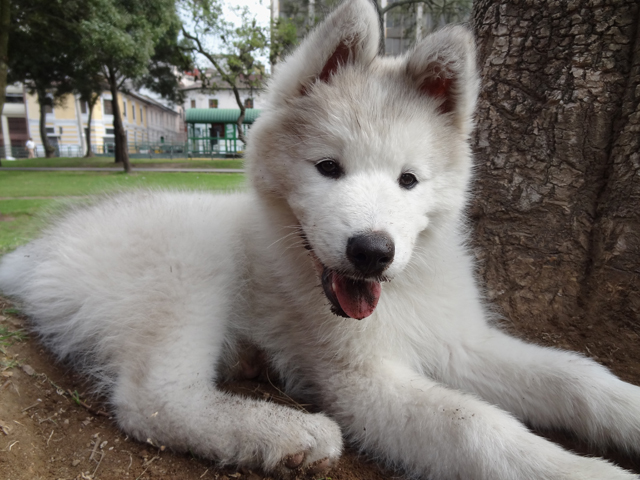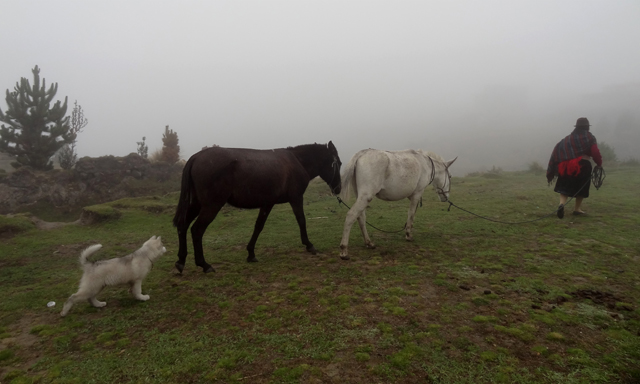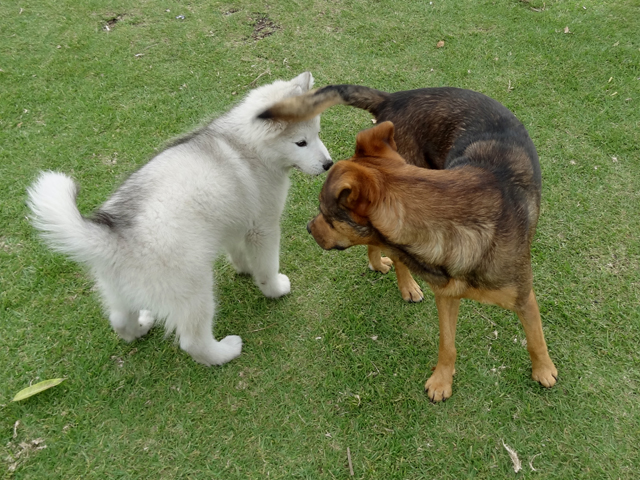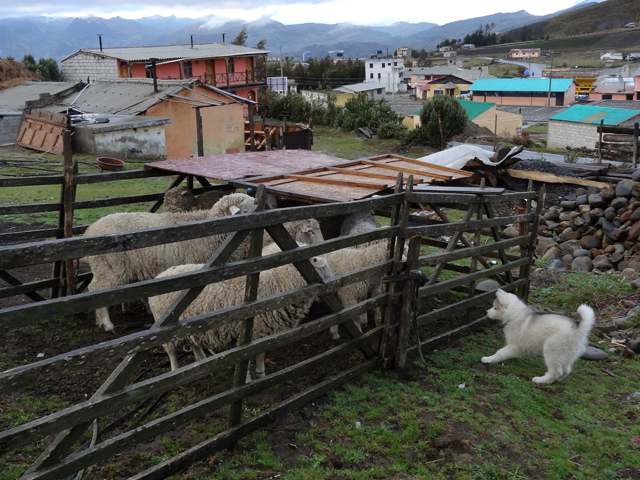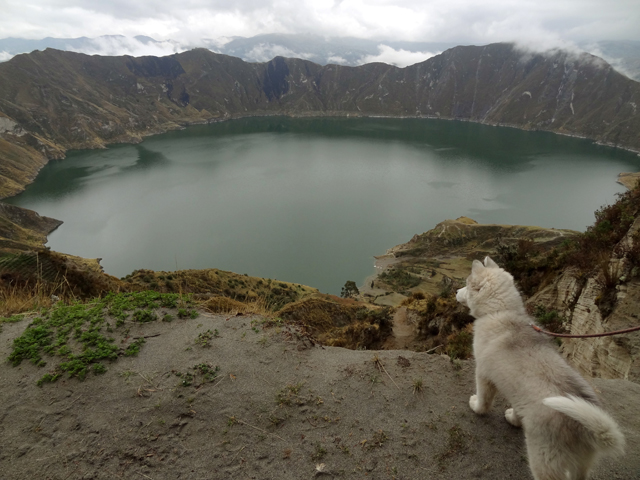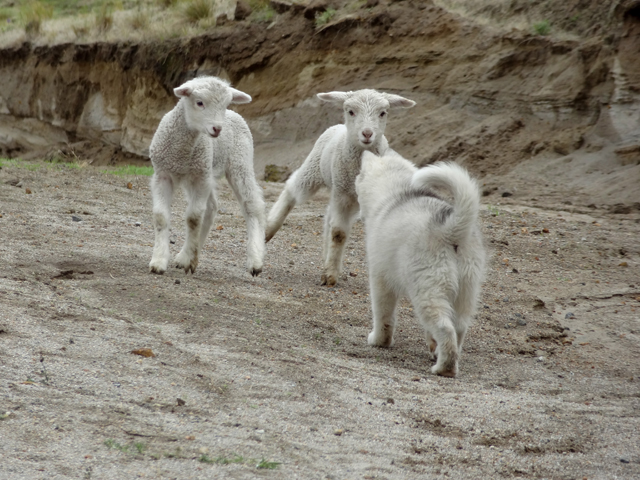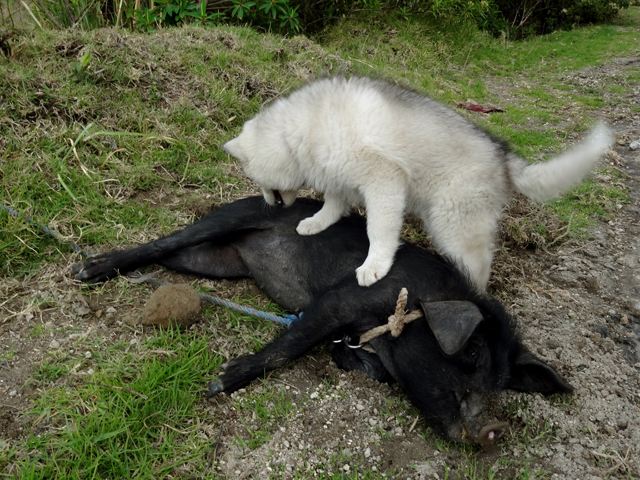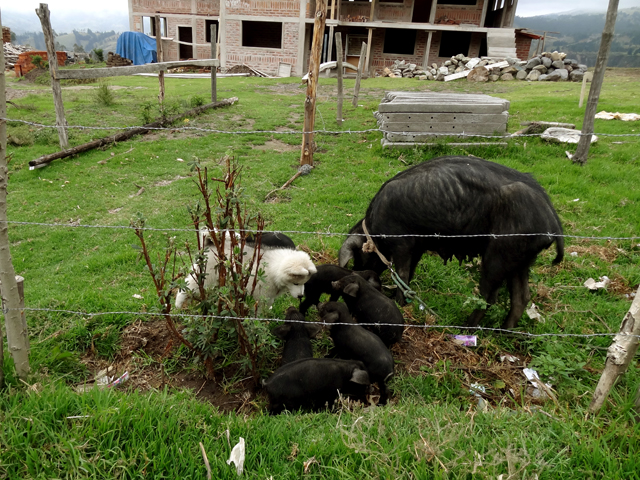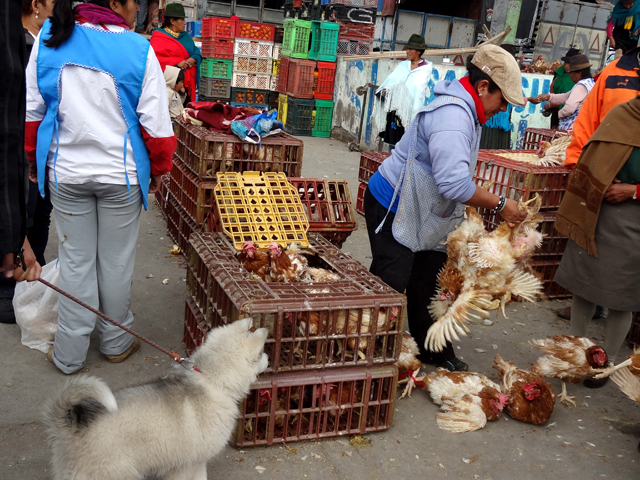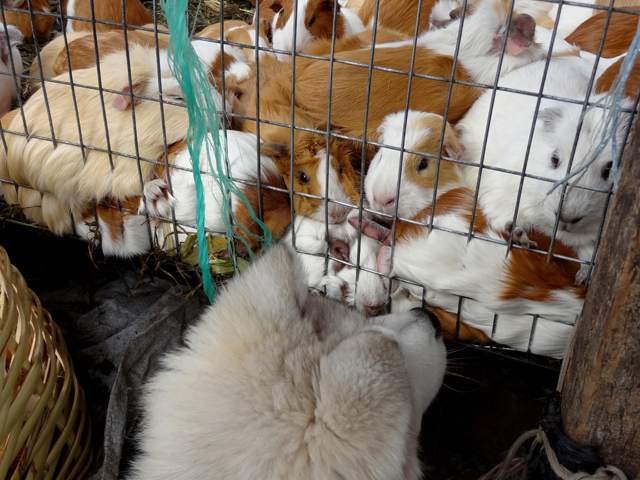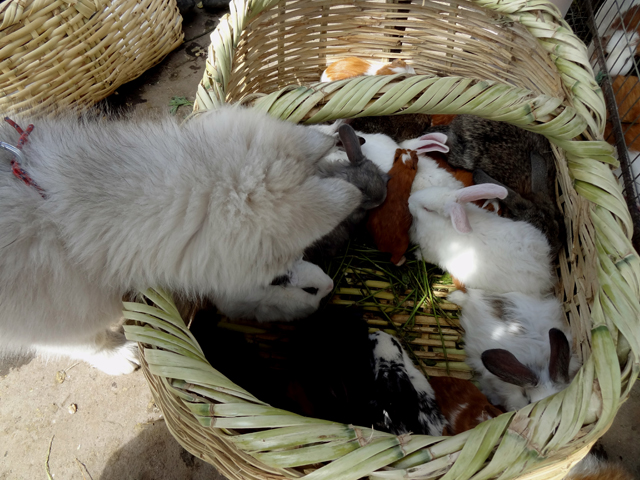Atuk - our new travel companion, or how we got a puppy in Peru during our rtw trip
We have big news and even bigger news. We'll postpone revealing the bigger news till later and the big news is that WE GOT A DOG! We've already written about the heartbreaking parting with the sweet puppy in Arequipa, Peru, and how we were torn regarding whether to keep it or not. But since on the last day before our departure from Arequipa the universe sent us a huge sign in the form of a wonderful girl who volunteered to adopt the puppy, we felt that the puppy belonged with her. However, the couple of weeks we spent with that dog, keeping it in the roof of our hotel and taking it to various places like eateries and markets, opened our eyes to the fact that travelling with a pet was possible. And then after a few more weeks of travelling Peru we arrived in Lima - a place with the biggest pets market possibly in the whole world. Apart from a huge number of pet shops and veterinarian facilities, there was a whole street with street vendors offering pets of all breeds for ridiculously low prices. Now there's something else we should mention - we'd been thinking about having a dog for a couple of years by then and had done a lot of reading on dog education and various breeds. And the conclusion we drew from all this research was that we definitely had a preferred breed - Alaskan Malamute, or the "king of dogs" (a quote borrowed from the movie "Nikki"). We were absolutely fascinated by the independent and free spirit of these dogs, maybe because it was so similar to our own... Another important factor for consideration was the fact that we wanted a companion for all times and situations and in this respect an Alaskan malamute being the dog who loves outdoor activities but prefers to stay indoors with the "pack" and doesn't have a doggy odour due to the special double coat was a perfect match, since it could participate in all our active hobbies (like trekking and jogging) but it would be possible to keep it inside a house/flat.
So here's a short summary of how we came to own Atuk (a name we chose for our puppy which means "wolf" in Quechua). As I mentioned above, on arrival in Lima we discovered what we labelled the "puppy street" where dozens of vendors were offering all sorts of puppies. At first we simply inquired out of curiosity whether any of them had any Malamutes for sale - nobody did but a few most entrepreneurial ones promised to check with their breeders and let us know the next day. However, only one did show up with a puppy he claimed to be a malamute but which judging by its blue eyes and other typical features was definitely a husky/husky mix. Following this fiasco we decided to google local malamute breeders and by some miraculous coincidence found an advertisement from a guy who was selling a litter of 5 gorgeous malamute puppies which were born a month before, for only 300 soles (about a hundred euro) each! We knew that the puppies were still too young to be separated from the mum, but we called the guy anyway to arrange a meeting and the same day went to check the puppies. To our further surprise by the time we arrived at his place just 3-4 hours later, he was left with only two puppies (both male), having sold the other three to some guy. Out of the two puppies left one more had already been promised to somebody from Colombia so technically out of the 5 puppies he had for sale that very morning only one was still available... and by even a funnier coincidence it was the puppy we liked most from the ad photo!
It all felt like destiny, but there were two important considerations on our part: first, we needed to make sure that we could bring the puppy back to Europe, documentation-wise; and second, we wanted the puppy to stay with the mum till it was at least 7 weeks old. So we told the guy we'd go browse a bit at a nearby Internet cafe and come back with a ready decision. Googling confirmed that with some effort we should be able to "import" the dog into the over-regulated Europe, so we came back to the guy with a positive decision but on one condition - he keeps the puppy for another three weeks while we continue travelling Peru. He didn't have any problem promising this, so together we went to the vet to do de-parasiting and establish the vaccination schedule for our new puppy. Since the first vaccination ("multiple") was due within the next three weeks, we agreed that the guy would take the dog to the vet. So we gave him the money for that vaccination and the food, and left the puppy in his care (with the same feeling a child would leave a present after having sneaked a sight of it three weeks before Christmas :-).
Atuk at 4 weeks - the one on the right in all of the four below photos (three of which are taken with the original owner's mobile):
The whole litter:
Because his original owner must have had the food accessible to puppies during the whole day, by the time we picked up our puppy at 7 weeks he looked more like a small seal than a puppy. In this photo you can see Atuk and his brother during the "overweight" stage of their puppy life :-):
There's no need to mention how excited we were during the following three weeks and especially when we finally got back to Lima. Since we arrived on a Sunday we had to wait a whole extra day before picking up Atuk, since we first needed to take him to the vet to arrange all the papers and that wasn't possible till Monday. In his usual tradition, the owner of Atuk's mum arrived about an hour late (the same happened the day we came to check the puppies), and while we did get our dog, we learnt that he didn't take him for the vaccination claiming that he'd spent that money on food (although we left separate amount for that type of expenditure). Another doubt we'll always have is whether Atuk spent those three weeks with his mum or - as we are inclined to think - simply in an enclosure with water, food, a few chew toys and his brother (the one promised to the Colombian people). The reason we think he never fulfilled his promise is because on a few photos he mailed us on our request we never saw the mum around the puppies, and most importantly - because the puppy had very poor bite inhibition when we picked him up (and teaching which till now remains the most important focus of our puppy-raising efforts). And while such irresponsible behaviour was quite disappointing, we were all too happy to get our puppy, so off we went - now the three of us - back to our hotel where we'd already agreed that we'd bring back a pet. And that was the beginning of our travelling with a puppy, which while being very challenging at times is definitely possible and a lot of fun. Below I'll sum up our main conclusions as to what it takes to travel with a puppy.
Atuk at 7 weeks, the day we finally picked him up:
The main reasons we decided to get a dog while still travelling:
- Socialization opportunities are much broader during travelling. The streets are full of balanced dogs; the landscapes are very diverse (mountains, forest, sea, rivers, jungle etc.) the markets are full of various animals; the cities are full of all sorts of surfaces, sights and sounds; the countries we travel are much more relaxed towards pets than Europe which gives us an opportunity to bring our puppy to hotels, eateries, all types of transports, and all sorts of places which would be off limits to a puppy in Europe and which therefore gives us a natural way to expand our puppy's exploration boundaries.
- While travelling we can be with our puppy 24/7 which means that we have much more time to observe him in all sorts of environments, to play with and train him, than we would have while working back at home.
- We love to travel and live in different countries, so our dog companion should be quite used to travelling and everything it implies (long hours in the crate, staying at hotels, exposure to all sorts of unfamiliar things which are always part of other cultures etc.)
- Another trigger to get a puppy while travelling was an opportunity to save a lot of money. Even after we will have paid all the additional expenses for flying the dog back home, the total costs are still going to be much lower than getting such a puppy back in Europe, especially since most of expenses like paying for the vaccinations, buying toys, a crate etc. are actually much lower in this part of the world and would have to be covered in Europe anyway, except at European rates. Actually, what we are really talking about is not the costs but the value: we find the opportunity to socialize a puppy through travelling truly worth any money or additional effort.
Videos of Atuk interacting with other animals:
Some practical things regarding travelling South America with a pet:
- Almost every single hotel we've asked didn't have problems letting us have the puppy in the room. In Peru we didn't have a single case of "No pets" policy, and in Ecuador we encountered it only once - in hotels in Quito, but after some search we did manage to find a hotel where they let us in.
- There are no additional costs involved in travelling with a pet on buses and nobody ever stopped us from boarding buses, minivans etc. (with another exception in Quito where a couple of times they suggested we took a local bus as no pets are allowed on the local metro-bus).
- On long-distance trips we transport the puppy in a crate, which after the journey we fold and attach to a backpack. In such a way we are mobile enough to walk around and look for hotels, relying entirely on local buses and avoiding the taxis. The only tiny problem we have with this solution is that because the current crate doesn't include a proper mat so we have to use newspapers, every time we get our puppy out you can read entire newspaper articles from the imprints on his wool-like fur :-).
- Since Atuk is still a puppy, chewing is a problem so to avoid continuously incurring costs of refurbishing entire rooms, we never leave him alone in any hotel. We have a whole chewing toy collection and every day invent toys to keep our easily-bored puppy entertained. We discovered that plastic bottles make some of the best toy building blocks - unscrewing/chewing off the lids, pushing/pulling them around, getting things we place inside are some of Atuk's favourite games. Biological waste like banana peel or avocado pits become toys in themselves without any modification :-). Quite in line with this chewing addiction, the puppy never misses a single chewing gum diligently scrubbing them off benches in the eateries, walls in stations and hotels etc. :-)
- Since the puppy is still too small to walk with us the whole day and needs his naps, depending on the situation we leave him at the hotel shower room, which is always a puppy-proof area due to total absence of any chewable materials (malamutes are known to chew through walls but even these guys wouldn't be able to chew a tile :-).
- Like any dog, at times Atuk 'talks', but in case of this puppy it's never really barking for barking's sake, as he just talks/talks back from time to time, and lately we are teaching him "quiet" to make sure we keep it under control. Additionally, since he doesn't have separation anxiety, he never barks or howls in our absence, which helps with the shower napping arrangement. During the night he's usually very quiet, which means that the talking attacks only happen during the hours when everybody is awake, so in this respect in about 1.5 months we've been travelling with the puppy, we've never once had complaints from the hotels.
- As to regulations, we've checked various official and non-official websites for individual Latin American countries and Europe and called/emailed a couple of governmental institutions responsible for regulations on pets import, and by now formed a pretty clear picture regarding the regulations of travelling with animals in different parts of the world. As far as the accompanying documentation is concerned, it's safe to assume that if the animal has an international veterinarian certificate or an animal passport from EU, its documents will be considered in order. A microchip is a requirement only for some countries but it's safer to have it to be covered for all cases (Atuk got his microchip back in Lima). It's the rabies vaccination regarding which there are a lot of discrepancies around the world, but the general way to describe the situation would be that the more developed the country the tougher the requirements, whereas in the less developed countries a simple vaccination at 3 months and regular re-vaccinations will suffice. So as far as, for instance, EU is concerned, to bring a pet from a third country would require not only the rabies vaccination but also a test carried out by a certified clinic (with only three-four such facilities available in the whole Latin America), with the blood sample taken after 21 days from the vaccination and the test results valid only after 3 months. Simple maths shows us that a puppy can be brought into Europe from a third country not earlier than 7 months of age. The only exception from this rabies test rule is done for pets imported from third countries which are considered to be rabies-free. The list of those is continuously reviewed and edited by the corresponding EU Commission, but the latest version we found contained countries like Mexico and Belarus. Needless to mention, this is the direction we are taking in order to get our Atuk back home (more details will follow later, once we see how it all works out)...
And below are some more photos we took of Atuk during his 1.5 months with us. Please don't be fooled by how sweet he looks - at times he can be a real nightmare and it definitely feels like we got every single common dog problems one can have, like biting, demand-barking, pulling during walks etc. However, we've noticed big progress over the past weeks so with persistence, firm attitude, coming up with creative ways to solve these problems and - most importantly - understanding our puppy (including his typical breed characteristics) we hope to bring up a really happy and balanced dog. One thing which helps enormously in raising this incredibly stubborn puppy is his intelligence. While malamutes are notoriously difficult to train, we discovered that Atuk learns very fast: he got most basic commands in just a couple of sessions and not being complete 3 months he can already perform "Sit", "Down", "Paw", "Up", as well as "Come" and "Stay" in their easy version (without distractions). However, we do see in our puppy that because of the main trait of his breed - a strong ability for independent decision-making - he will only perform a command if it makes sense in his own judgement. Since he is not very food-oriented, it took us some time to find a treat he really likes (puppy biscuits dipped in a tiny bit of yogurt, which works basically because of the yogurt). It also took some personal discoveries to start resolving other problems, like biting: after reading dozens of articles on the internet and trying most of the recommended solutions, as well as asking a friend for advice, one day guided by a flash of intuition I tried putting the puppy upside-down for a couple of seconds straight after his attempt to bite. Because it was so immediate and he really disliked something about the posture, it worked like a charm! Not that we are completely over the biting yet, but at least this is the only thing that seems to make our little teething monster understand that we don't perceive his biting attempts as the fun game he thinks it is :-). By the end of the day, it's huge joy to be raising your own companion, and Atuk is really sweet - so sweet that locals keep asking us if he is for sale, and if we had a dime for every time we hear "Que lindo cachorrito/osito" (= "What a beautiful puppy/baby-bear"), "Hachi" (the name of the Akita dog in a movie about incredible dog loyalty) or some other exclamation of this kind, we'd be covering at least a quarter of our daily budget just thanks to Atuk :-).
That's it so far about Atuk and you'll be seeing more photos of him in our subsequent posts. If any of you have tips and tricks for raising a puppy, or you've had experience of importing a pet into EU, your comments will be truly welcome! On the last note, for those who are interested in more information about the wonderful breed of Alaskan malamute, we'd recommend the following two movies - "Eight Below" and "Nikki, Wild Dog of the North", as well as this page on living with an Alaskan malamute.
During the visit to Chan-Chan - one of Peru's most important historical sights:
Waiting at the Trujillo bus station, Peru:
At the beach in Mancora, Peru:
Street market in Machala, Ecuador:
At a park in Cuenca, Ecuador:
At the colourful Guamote Thursday market, Ecuador:
At the roof terrace of our hotel in Baños, Ecuador:
Atuk with dog friends he makes in the street:
Waiting at a Quito terminal:
During a walk through the cloud forest in Mindo, Ecuador:
A paw-washing procedure after the walk:
A 3-hour waiting session at the Carcelen terminal, Quito:
Working on his adult-size rawhide bone :-):
At a park in Quito:
During the Quilotoa loop trek, Ecuador:
At the Saquisili animal market, Ecuador:
With a llama at a village close to Latacunga, Ecuador:
